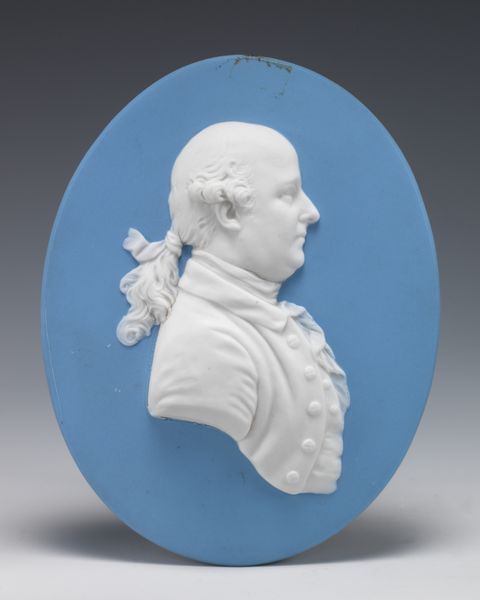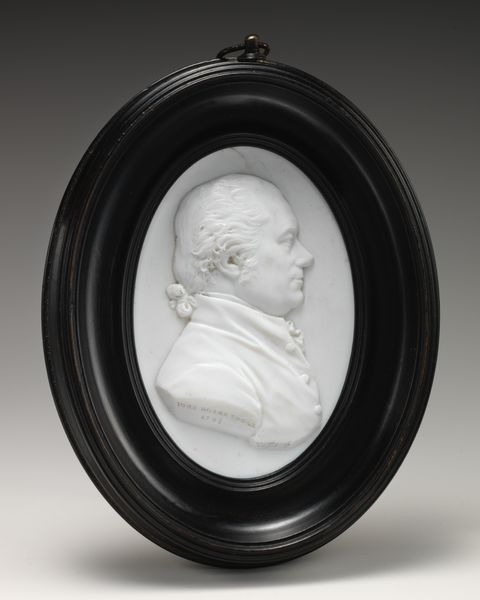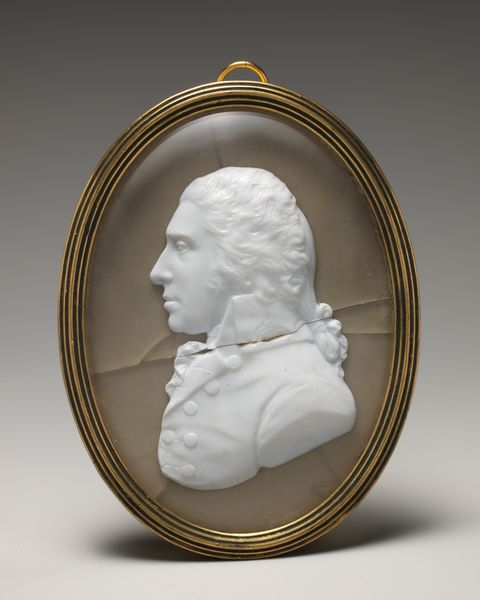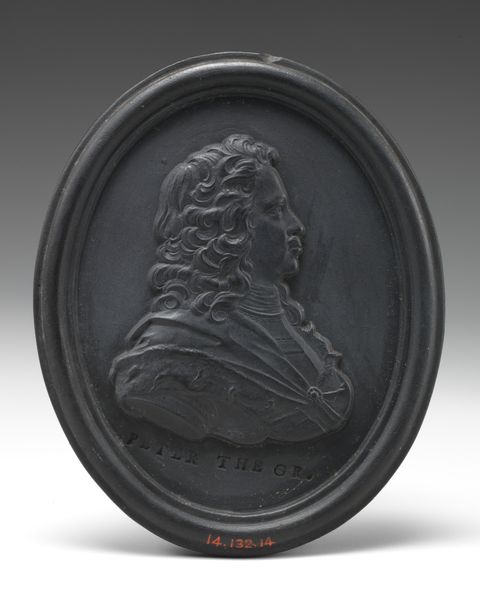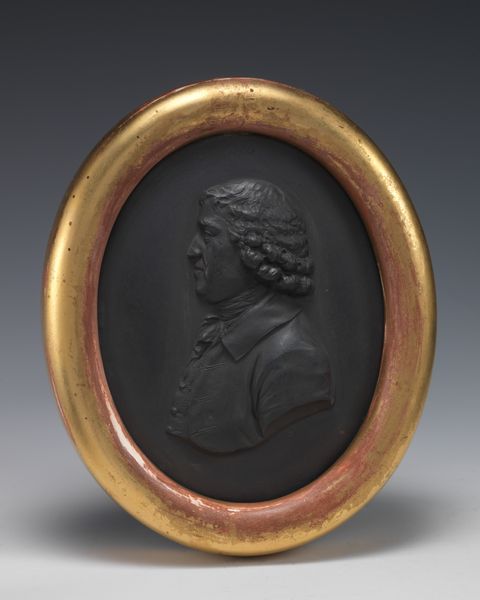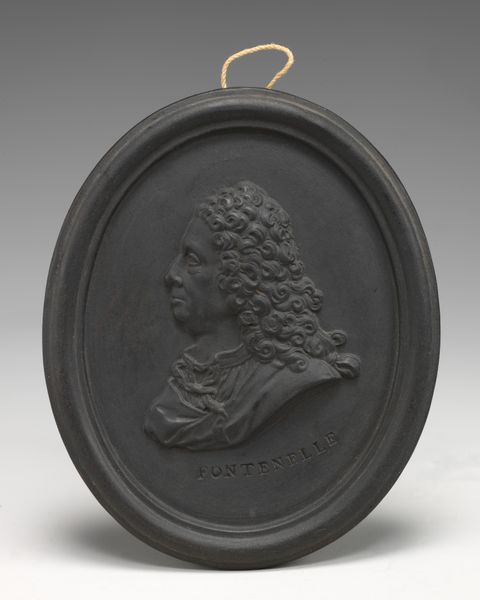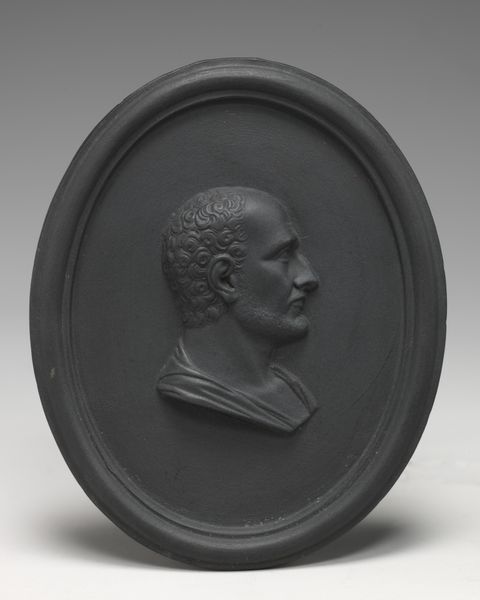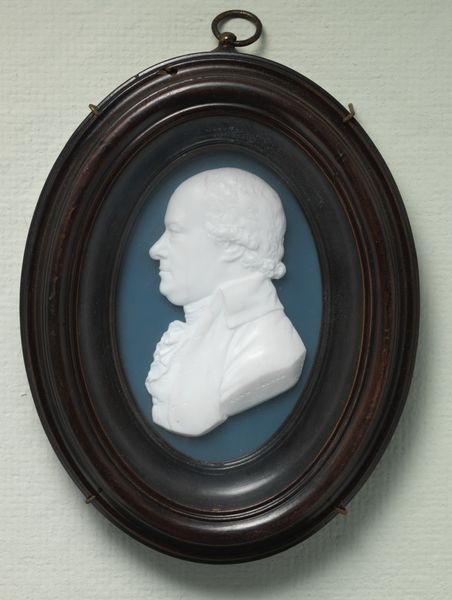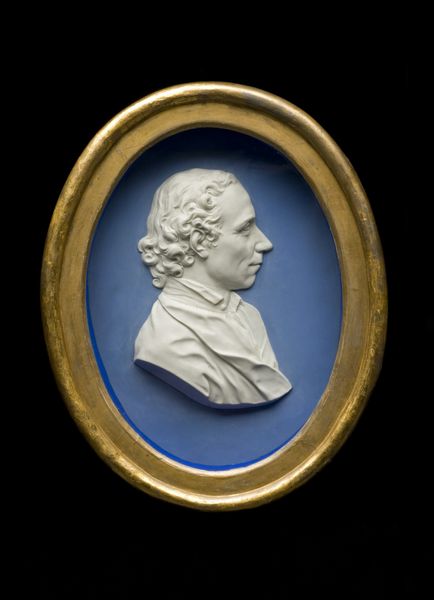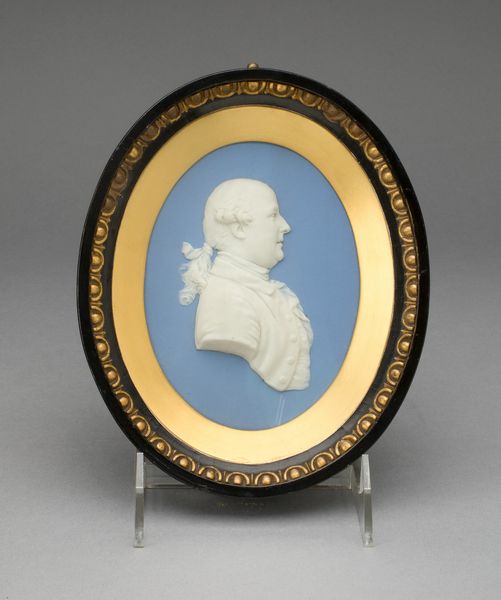
ceramic, sculpture
#
portrait
#
neoclacissism
#
ceramic
#
sculpture
#
decorative-art
#
profile
Dimensions: 3 × 2 3/8 in. (7.6 × 6 cm)
Copyright: Public Domain
Editor: Here we have Josiah Wedgwood’s profile of Ralph Griffiths, made sometime between 1785 and 1799, from ceramic. It’s striking how such a simple portrait uses its color and relief to create something elegant. How does its production inform its meaning? Curator: This piece embodies Neoclassical ideals but let's think about Wedgwood himself. He was an innovator in ceramic production. Consider the industrial processes behind the making of Jasperware. This wasn’t just art, but a demonstration of industrial capability, accessible luxury enabled by mass production. Does this change your reading of it? Editor: Absolutely. It's not just a portrait but a commodity, reliant on factories and labor to replicate classical forms. Was Wedgwood’s intent artistic, or driven by expanding his market? Curator: It's both, isn't it? The drive to emulate classical art met with the means to disseminate it widely. The color is part of this too: it mimics stoneware and marble, but created by industrialized methods, widening its availability beyond elites. Wedgwood was blurring the lines between fine art, craft, and industry. Editor: So, it challenges traditional hierarchies? Taking something usually reserved for the wealthy, like a portrait sculpture, and making it accessible to a wider audience through mass production? Curator: Precisely! It makes you think about what defines 'high art,' right? How much is the value derived from scarcity versus artistry and utility, and social function? The materials, production, and intended market are central to understanding this piece, it wasn't simply art for art's sake. Editor: That is fascinating. Looking at it now, knowing it was manufactured this way really makes me think about art and production much more critically. Thank you for pointing that out! Curator: And considering the societal impact and material conditions reshapes the way we understand historical context, wouldn't you say?
Comments
No comments
Be the first to comment and join the conversation on the ultimate creative platform.

